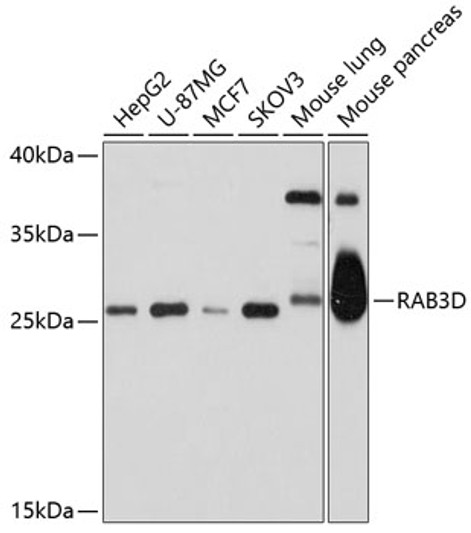| Tissue Specificity | Widely expressed. |
| Post Translational Modifications | Phosphorylated by LIMK1 on serine residues.phosphorylation may alter the tubulin polymerization activity. Phosphorylation by LIMK2, but not LIMK1, regulates astral microtubule organization at early stage of mitosis. Phosphorylation by ROCK1 at Ser-32, Ser-107 and Ser-159 inhibits interaction with HDAC6, resulting in decreased acetylation of tubulin, increased cell motility and entry into S-phase. Phosphorylation by CDK1 inhibits the microtubule polymerizing activity. Degraded by the proteasome.zinc-binding inhibits degradation by the proteasome. |
| Function | Regulator of microtubule dynamics that plays a key role in myelination by promoting elongation of the myelin sheath. Acts as a microtubule nucleation factor in oligodendrocytes: specifically localizes to the postsynaptic Golgi apparatus region, also named Golgi outpost, and promotes microtubule nucleation, an important step for elongation of the myelin sheath. Required for both uniform polarized growth of distal microtubules as well as directing the branching of proximal processes. Shows magnesium-dependent GTPase activity.the role of the GTPase activity is unclear. In addition to microtubule nucleation activity, also involved in microtubule bundling and stabilization of existing microtubules, thereby maintaining the integrity of the microtubule network. Regulates microtubule dynamics by promoting tubulin acetylation: acts by inhibiting the tubulin deacetylase activity of HDAC6. Also regulates cell migration: phosphorylation by ROCK1 inhibits interaction with HDAC6, resulting in decreased acetylation of tubulin and increased cell motility. Plays a role in cell proliferation by regulating the G1/S-phase transition. Involved in astral microtubule organization and mitotic spindle orientation during early stage of mitosis.this process is regulated by phosphorylation by LIMK2. |
| Protein Name | Tubulin Polymerization-Promoting ProteinTppp25 Kda Brain-Specific ProteinTppp/P25P24P25-Alpha |
| Cellular Localisation | Golgi OutpostCytoplasmCytoskeletonMicrotubule Organizing CenterNucleusSpindleSpecifically Localizes To The Postsynaptic Golgi Apparatus RegionAlso Named Golgi OutpostWhich Shapes Dendrite Morphology By Functioning As Sites Of Acentrosomal Microtubule NucleationMainly Localizes To The CytoskeletonAlso Found In The NucleusHoweverNuclear Localization Is Unclear And Requires Additional EvidencesLocalizes To Glial Lewy Bodies In The Brains Of Individuals With SynucleinopathiesDuring MitosisColocalizes With Limk2 At The Mitotic Spindle |
| Alternative Antibody Names | Anti-Tubulin Polymerization-Promoting Protein antibodyAnti-Tppp antibodyAnti-25 Kda Brain-Specific Protein antibodyAnti-Tppp/P25 antibodyAnti-P24 antibodyAnti-P25-Alpha antibodyAnti-TPPP antibodyAnti-TPPP1 antibody |
Information sourced from Uniprot.org









